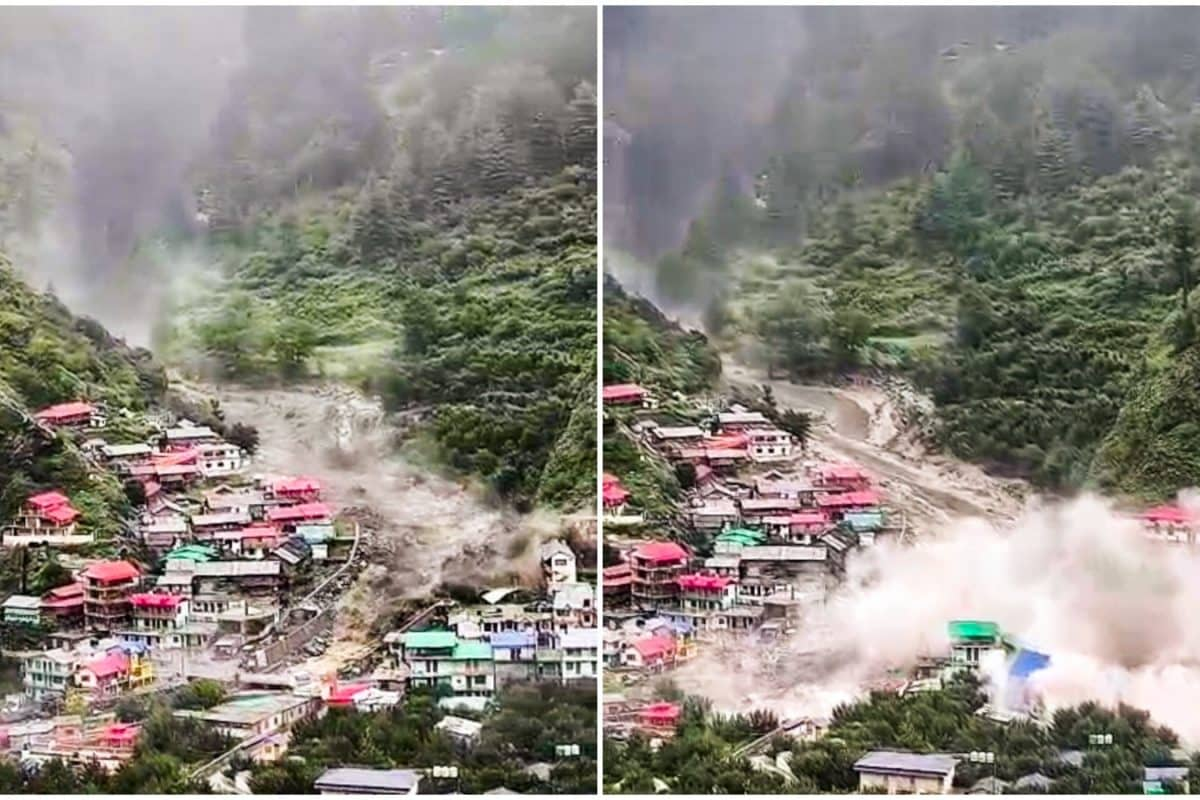

The Himalayan village of Dharali in Uttarakhand, India, has been devastated by a flash flood triggered by a cloudburst on August 5, 2025. The disaster has resulted in widespread destruction, with homes, hotels, and infrastructure swept away by a torrent of water and debris.
Eyewitness accounts describe a terrifying surge of muddy water engulfing the town, leaving residents scrambling for their lives. One resident of Dharali recounted hearing the sound of rushing water and stones before he and his family went outside. Upon seeing the Kheer Ganga River overflowing, they blew whistles and shouted to alert others in the Dharali market to flee. Despite their efforts, many were overtaken by the floodwaters.
The flash flood was reportedly triggered by a cloudburst that caused the Kheer Ganga River to swell rapidly. The India Meteorological Department (IMD) recorded extremely heavy rainfall of 21cm (8.3 inches) in some parts of Uttarakhand, exceeding the 10cm (3.9 inches) per hour threshold for a cloudburst. Experts suggest that the disaster was not solely due to the heavy rainfall, but also a result of a massive collapse of glacial sedimentary deposits, with an estimated 360 million cubic metres of debris. The unstable glacial deposit, combined with the steep terrain, accelerated the debris flow, leaving residents with little chance of escape.
The disaster has taken a heavy toll on human life and property. Initial reports confirmed at least four fatalities, and dozens more are feared missing. Approximately 100 people were reported missing, including about eight soldiers from a nearby army camp. Preliminary assessments suggest that at least 50 hotels were submerged or washed away, along with 40–50 houses. The Dharali market was also submerged, raising fears of further casualties. Mobile and electricity towers were also swept away by the floodwaters.
Rescue operations are underway, with teams from the army, State Disaster Response Force (SDRF), and National Disaster Response Force (NDRF) deployed to assist in the search and relief efforts. Approximately 150 army troops reached the town and rescued around 20 survivors. The Chief Minister of Uttarakhand, Pushkar Singh Dhami, stated that 190 people were successfully rescued. However, rescue efforts have been hampered by continuing heavy rain, damaged roads, and the sheer volume of debris.
The Uttarakhand government is struggling to provide clear information on casualties and missing persons. Chief Minister Dhami is overseeing the operations, but the true extent of the tragedy is yet to be revealed. Essential food items and relief material have been delivered to the Dharali area via helicopters.
The disaster has disrupted connectivity to Gangotri Dham, impacting the Char Dham Yatra. The IMD's forecast for continued heavy rainfall has raised concerns about potential further emergencies, and officials are maintaining round-the-clock vigilance in vulnerable zones.
The Uttarakhand flash flood serves as a stark reminder of the vulnerability of Himalayan communities to extreme weather events. Experts suggest that global warming is causing mountain temperatures to rise faster than the global average, leading to increased glacier melting and a higher risk of catastrophic flooding. Unplanned development in mountain regions has also exacerbated the damage from such storms.